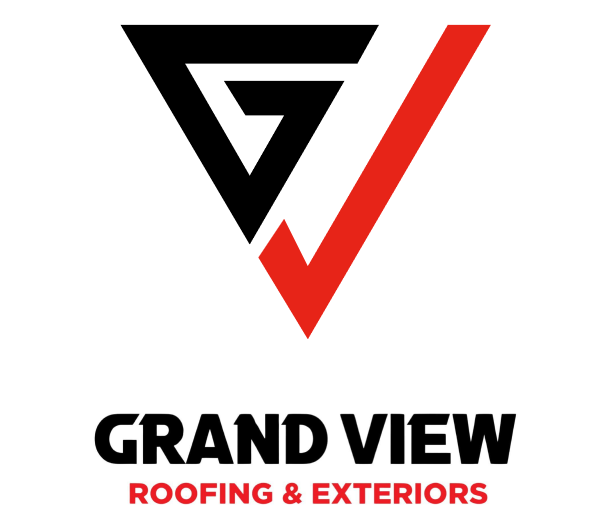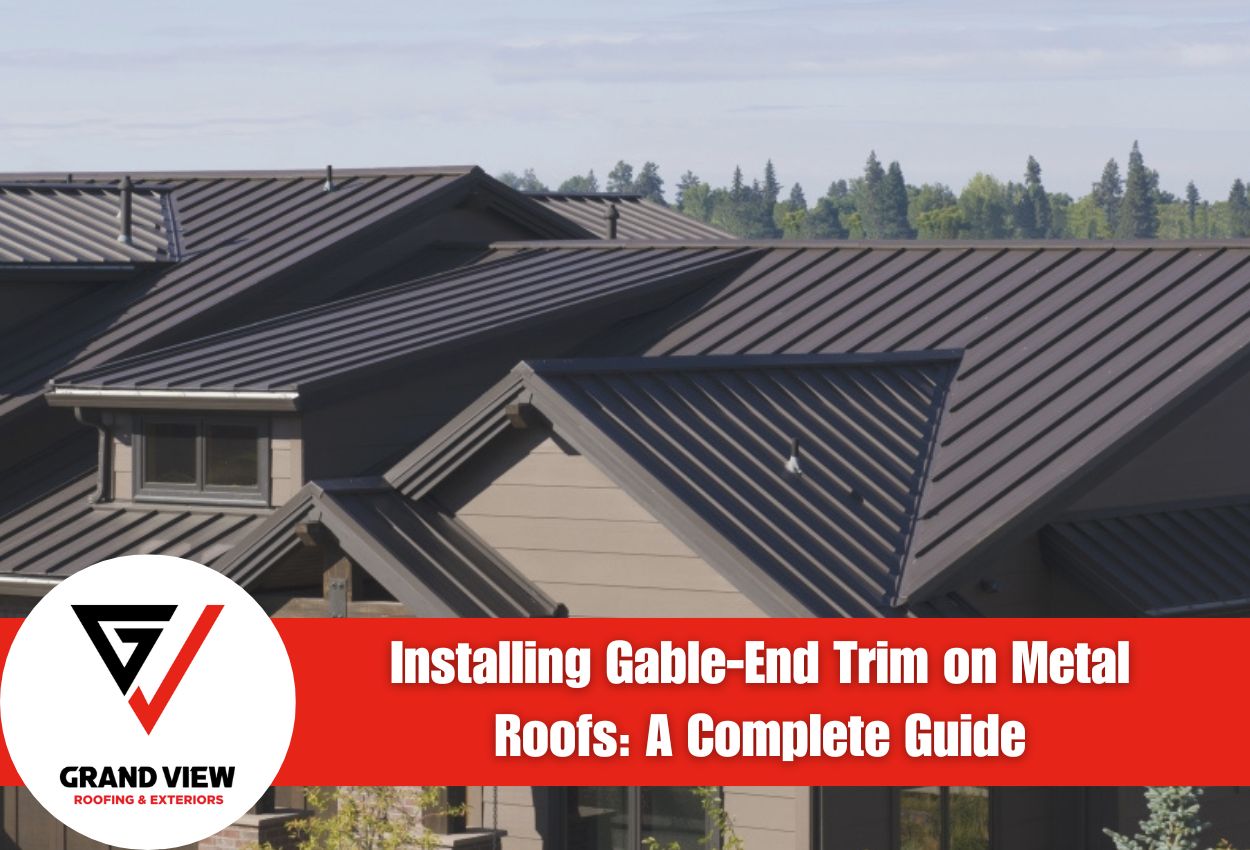Understanding Soffit and Ridge Vent Importance for Proper Roof Ventilation

A properly ventilated roof system does more than just regulate attic temperature — it protects your entire home. At the heart of effective roof ventilation are two key elements: soffit vents and ridge vents. These components work together to create balanced airflow that safeguards your roof structure and enhances your home’s overall energy efficiency.
Soffit vents, located underneath the eaves of your roof, are intake points for fresh air. Meanwhile, the ridge vent, positioned along the peak of your roof, is an exhaust point. The placement of these opposite vents creates a natural flow of air that moves through your attic space, pushing out hot, humid air while drawing in cooler, drier air from outside.
For South Jersey homeowners, understanding this ventilation system is important due to the region’s varying seasonal conditions. Without sufficient roof ventilation, moisture can accumulate in your attic, creating the perfect conditions for mold, rot, and premature roof deterioration. Additionally, having hot, stagnant air in the attic, caused by inadequate ventilation, forces your HVAC system to work harder, resulting in higher energy bills throughout the year.
The soffit and ridge vent system represents one of the most effective and energy-efficient solutions for maintaining proper attic ventilation and protecting your home from moisture-related damage. When correctly installed, these components significantly extend your roof’s lifespan while improving your home’s comfort.
Why Balanced Attic Ventilation Matters for Your Home’s Health
Proper attic ventilationis your home’s respiratory system, and its importance cannot be overstated. During hot summer months in South Jersey, temperatures in poorly ventilated attics can soar to 150 degrees Fahrenheit or higher. This heat travels down into living spaces, forcing air conditioning systems to stay on longer to maintain desired temperatures. The combination of soffit and ridge vents creates a continuous airflow that removes this superheated air, potentially reducing cooling costs.
Other than energy savings, balanced roof airflow prevents shingle damage. Excessive heat can cause asphalt shingles to become brittle and deteriorate prematurely. Many shingle manufacturers even require ventilation to maintain warranty coverage, highlighting its critical role in roof longevity.
During winter, attic ventilation prevents two main issues: ice dams and condensation. When warm air from your home gets trapped in an inadequately ventilated attic, it melts snow on the roof, which then refreezes at the colder eaves, creating ice dams. Additionally, moisture from everyday activities like cooking and showering can rise into your attic, where it condenses on cold surfaces if ventilation is insufficient.
This trapped moisture can become more problematic, potentially soaking insulation (reducing its effectiveness), promoting mold growth, and even causing structural wood to rot over time. A properly designed ventilation system with sufficient soffit and ridge vents prevents these problems.
The Science Behind Effective Roof Airflow Systems
Knowing the science that powers roof ventilation helps homeowners understand why soffit and ridge vents are so essential. At its core, effective roof ventilation operates on the simple principle of thermal convection: warm air naturally rises while cooler air falls. This physical law drives passive ventilation systems, which don’t require any mechanical components or energy consumption.
When correctly designed, soffit vents located at the roof’s lowest points allow fresh air to enter the attic space. As this air warms from heat rising through your home and solar radiation on the roof surface, it naturally moves upward through the attic and exits through ridge vents positioned at the roof’s peak. This continuous cycle creates a natural chimney effect that maintains consistent airflow year-round.
Ventilation requirements are based on your specific home dimensions and local climate. The standard formula used by South Jersey roofing professionals calls for 1 square foot of ventilation for every 300 square feet of attic floor space, with balanced intake and exhaust. For homes in our humid coastal region, this ventilation ratio manages higher moisture levels effectively.
Different roof configurations and home designs may require adjustments to these calculations. Factors like roof pitch, attic insulation levels, and the presence of vapor barriers all influence the optimal ventilation system for your specific home. A professional assessment ensures your roof ventilation system provides maximum protection and efficiency.
Common Problems Caused by Inadequate Roof Ventilation
When soffit and ridge vents aren’t properly installed or are absent altogether, homeowners often face serious and costly consequences. Inadequate roof ventilation creates a perfect environment for numerous problems that can damage your home’s structure and affect your quality of life. Understanding these issues highlights why proper attic ventilation is a critical investment rather than an optional feature.
Moisture-related problems are among the most destructive consequences of poor ventilation. Without sufficient airflow, humidity from everyday activities becomes trapped in your attic. This excess moisture condenses on cooler surfaces, gradually soaking wooden rafters and beams. Over time, this leads to wood rot that compromises your roof’s structural integrity. The damp environment also creates ideal conditions for mold and mildew growth, which can spread to your insulation, diminishing its effectiveness and potentially causing health issues for your family.
Energy inefficiency represents another significant problem caused by poor ventilation. In South Jersey homes, inadequately ventilated attics can reach extreme temperatures during the summer. This heat radiates downward into living spaces, forcing air conditioning systems to work harder and longer. The result is noticeably higher utility bills and uncomfortable temperature variations throughout your home. During winter, poor ventilation can contribute to ice buildup on your roof’s edge, causing water to back up under shingles and eventually leak into your home.
Soffit and ridge vent installation creates balanced airflow that prevents these issues, protecting both your home and your wallet from unnecessary damage and expense.
Roof Vent Installation Best Practices
Correctly installing soffit and ridge vents is critical so your roof ventilation system functions as intended. Even high-quality components can underperform if installation guidelines aren’t carefully followed. Roofing technicians should adhere to manufacturer specifications while applying field-tested techniques that account for our region’s unique climate.
When installing soffit vents, careful positioning and adequate quantity are essential. These intake vents should be evenly distributed along the eaves to ensure balanced airflow throughout the attic space. A common mistake is installing insufficient soffit ventilation, which creates negative pressure that can actually draw conditioned air from your living space into the attic. Similarly, ridge vent installation requires precision cutting of the roof deck along the peak and careful sealing to prevent water intrusion while maximizing airflow capacity.
For older homes in South Jersey, retrofitting modern ventilation solutions presents specific challenges. Many historic properties were built before current ventilation standards were established. A professional approach involves carefully evaluating the existing structure to identify the least invasive installation methods that preserve architectural integrity. Options include low-profile ridge vents designed to blend with traditional rooflines and hidden soffit systems that maintain your home’s original appearance while improving ventilation performance.
Remember that ventilation isn’t a one-size-fits-all solution. Factors like roof geometry, existing insulation, and nearby tree coverage all influence the optimal system design for your specific home.
Maintaining Your Roof Ventilation System for Long-Term Protection
Just like any part of your home, your soffit and ridge vents require regular maintenance to ensure they continue protecting your home. A well-maintained ventilation system provides lasting benefits, while neglected vents can quickly become compromised, undermining your home’s protection against moisture damage and energy inefficiency.
A seasonal maintenance routine should include visual inspection of all soffit vents for debris buildup, insect nests, or physical damage. During fall in South Jersey, leaves and small branches can accumulate in these intake points, restricting airflow throughout your entire attic. Similarly, ridge vents should be checked for proper sealing and attachment, particularly after severe weather that may have loosened components or allowed debris to accumulate.
Be alert for warning signs that suggest ventilation problems are developing. Inside your attic, look for moisture stains on the underside of the roof deck, rusted nail heads protruding through sheathing, or visible mold growth on wood surfaces. These indicators suggest inadequate air movement. In your living spaces, unexplained increases in energy bills, uneven temperatures between rooms, or ice dams forming on roof edges during winter can all signal ventilation system issues.
A professional inspection of your roof ventilation system every few years can identify minor issues. With routine attic ventilation maintenance, your soffit and ridge vents will continue providing essential protection against moisture damage while maintaining energy efficiency throughout your home.
Choosing the Right Ventilation Solution for Your South Jersey Home
Selecting the appropriate ventilation system for your South Jersey home requires understanding the climate of our region. With humid summers where temperatures frequently exceed 90 degrees Fahrenheit and winters that bring freezing conditions, your ventilation needs vary significantly throughout the year. The proximity to the Atlantic Ocean creates higher humidity levels that need more efficient moisture management.
When evaluating ventilation options, consider both immediate and long-term benefits. While basic ventilation systems might have lower upfront costs, they often fail to provide adequate protection against South Jersey’s humidity. A professionally designed system with correctly sized soffit and ridge vents is a valuable investment in your home’s longevity. Homeowners typically see returns through extended roof lifespans, often years beyond poorly ventilated roofs, and energy savings that accumulate year after year.
This protection extends beyond just the roof itself. Attic airflow prevents moisture infiltration that can damage insulation, electrical systems, and interior finishes. Many homeowners are surprised to learn that effective roof ventilation systems can maintain more consistent indoor temperatures, reducing HVAC system usage. This translates to both increased comfort and lower utility costs throughout South Jersey’s seasonal extremes, making balanced soffit and ridge vent installation one of the most cost-effective home improvements available.
Roof Ventilation Services in New Jersey with Grand View Roofing & Exteriors
Understanding the importance of attic ventilation is key to maintaining the health of your home. At Grand View Roofing & Exteriors, we specialize in the expert installation of soffit and ridge vents, which are crucial for preventing moisture damage and enhancing energy efficiency. These systems not only protect your roof but also contribute to a balanced indoor climate, saving you on energy costs year-round.
Don’t let inadequate ventilation lead to expensive repairs and uncomfortable living conditions. Reach out to our team at (856) 305-9883 to learn how our ventilation solutions can extend the life of your roof. Call today to secure a healthier, more durable home.





 Call Us Today - (856) 305-9883
Call Us Today - (856) 305-9883 



